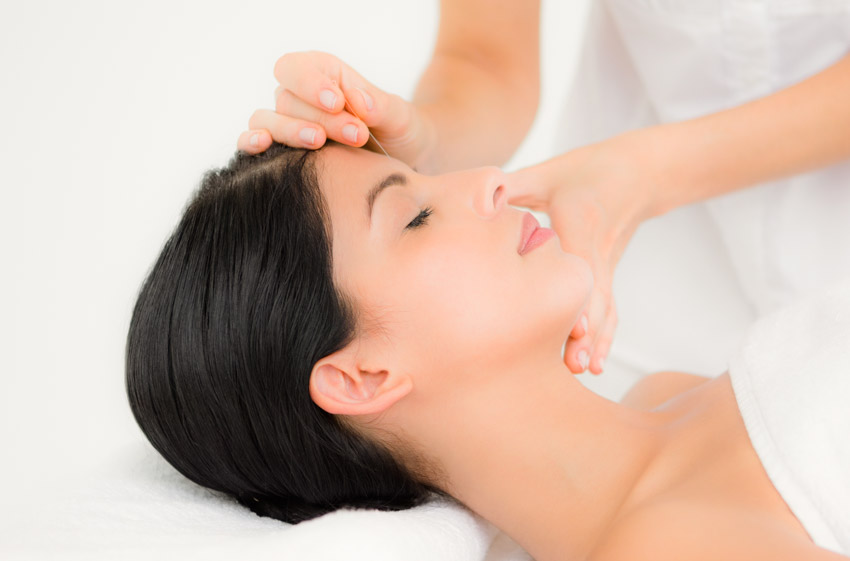
Acupuncture is effective for patients with multiple sclerosis (MS). University of Campinas researchers found true electroacupuncture more effective than sham electroacupuncture for improving quality of life in patients with MS. [1] In another study by Wang et al., acupuncture reduced the rate of MS relapses. Compared with sham acupuncture, true acupuncture reduces the annual recurrence rate, pain levels, and bouts of depression levels.
Multiple sclerosis is a nervous system autoimmune disorder. The disease is common in young and middle-aged people, with 80% of whose clinical courses are characterized by relapsing-remitting multiple sclerosis (RRMS). This eventually causes neurological dysfunction and seriously affects quality of life. While immunomodulatory drugs have been proven to delay disease progression, reduce relapse rates, and lower disability rates in clinical practice, they are expensive, may have serious adverse effects, and require lifelong use.
Acupuncture has been reported for treating 7.2% to 21% of MS cases. [2] In addition to improving the quality of life with MS and reducing the relapse rate, acupuncture treatment can help MS patients reduce fatigue, improve bladder function, reduce the development of spasticity, and relieve limb pain. [3] Moreover, (Traditional Chinese Medicine) TCM treatments reduce the number of relapses during the medication withdrawal period, decreases the need for hormone usage, and relieves adverse drug reactions. [4]
Researchers Quispe-Cabanillas et al. from University of Campinas found true electroacupuncture more effective than sham electroacupuncture for improving quality of life, including reducing pain and depression. The results were measured by the Expanded Disability Status Scale (clinical status), Visual Analogue Scale (pain), and Functional Assessment of MS (quality of life).
The study was set up as a double-arm cohort. A total of 31 patients were diagnosed and treated for RRMS at the MS outpatient clinic of the University of Campinas Hospital (UNICAMP) in Campinas in São Paulo, Brazil. One group received true electroacupuncture (TEA), and the other received sham electroacupuncture (SEA). The following acupoints were selected for the true acupuncture treatment to stimulate the immune system:
- ST36 (Zusanli)
- SP6 (Sanyinjiao)
- LI4 (Hegu)
- LI11 (Quchi)
- EX-HN3 (Yintang)
The location of the points, angle of insertion, and depth of insertion were based standard Chinese medicine protocols. The deqi sensation was achieved for each acupoint. In the SEA group, needles were inserted one centimeter lateral to the acupoints applied for the TEA group with an insertion depth of less than 0.2 cm. After the needles were inserted, they were connected to an impulse electro-stimulator set to 4 Hz in discontinuous waves with a pulse width of 0.5 ms. For the SEA group, the needles were connected to an electro-stimulator, but no actual electrical stimulation was given.
The clinical status evaluations based on the EDSS were similar for the two groups at the beginning of the study. After 6 months of treatment, the TEA group performed better than the SEA group, and there was a significant difference between the two groups. In terms of QOL scores, the TEA group outperformed the SEA group immediately after treatment, three months after treatment, and six months after treatment. Pain levels in the TEA group, evaluated by the VAS scores, decreased after both three and six months . There was an improvement after three months in the SEA group, but this did not persist to the end of treatment.
Beijing Chinese Medicine Hospital Affiliated to Capital Medical University researchers (Wang et al.) found acupuncture effective for delaying and reducing the relapse of relapsing-remitting multiple sclerosis (RRMS). Treatment efficacy was evaluated with the scores of the expanded disability status scale (EDSS), the annual recurrence rate, and the recurrence interval.
The randomized clinical trial involved a total of 42 patients, separated into two groups: a true acupuncture group (TA, n=21) and a sham acupuncture group (SA, n=21). For the true acupuncture group, acupuncture was applied according to Professor Wang Leting’s empirical prescriptions, including the Empirical Ten Needles, Thirteen Needles of the Governor Vessel, and Twelve Needles of Hand and Foot. The acupuncture treatment was given once per day, five days per week. Each treatment course consisted of two weeks of acupuncture treatments followed by a two-week break before the next course began. All patients received three months of treatment in total. After treatment, follow-up visits were conducted for two years.
In the TA group, EDSS scores at 3-month and 6-month data points improved compared with those before treatment and also those at 12-month and 24-month data points. True acupuncture outperformed sham acupuncture at every data point. In both groups, the annual recurrent rates after treatment were reduced compared to those before treatment, and the values in the TA group were better than those in the SA group. The recurrent interval in the TA group was significantly longer than that in the SA group 441.56 ±65.37 days vs 382.78 ±59.33 days.
Objective and subjective data indicates that acupuncture is effective for the treatment of multiple sclerosis. According to the research covered in this article, acupuncture improves quality of life in MS patients and delays relapses.
References:
[1] Quispe-Cabanillas J G, Damasceno A, Glehn F V, et al. (2012). Impact of electroacupuncture on quality of lifefor patients with relapsing-remitting multiple sclerosis under treatment with immunomodulators: a randomized study. BMC Complement Altern Med, 12(1):209.
[2] Stoll SS, Nieves C, Tabby DS, et al. (2012). Use of therapies other than disease-modifying agents, including complementary and alternative medicine, by patients with multiple sclerosis: a survey study.
[3] Esmonde L, Long AF. (2008). Complementary therapy use by persons with multiple sclerosis: benefits and research priorities[J]. Complement Ther Clin Practi, 14(3): 176-184.
[4] Wu YQ, Zhang YL, Gao Y. (2013). An analysis of contemporary medical practitioners' experience in the treatment of multiple sclerosis. Chinese Archives of Traditional Chinese Medicine, 31(8): 1781-1784.


